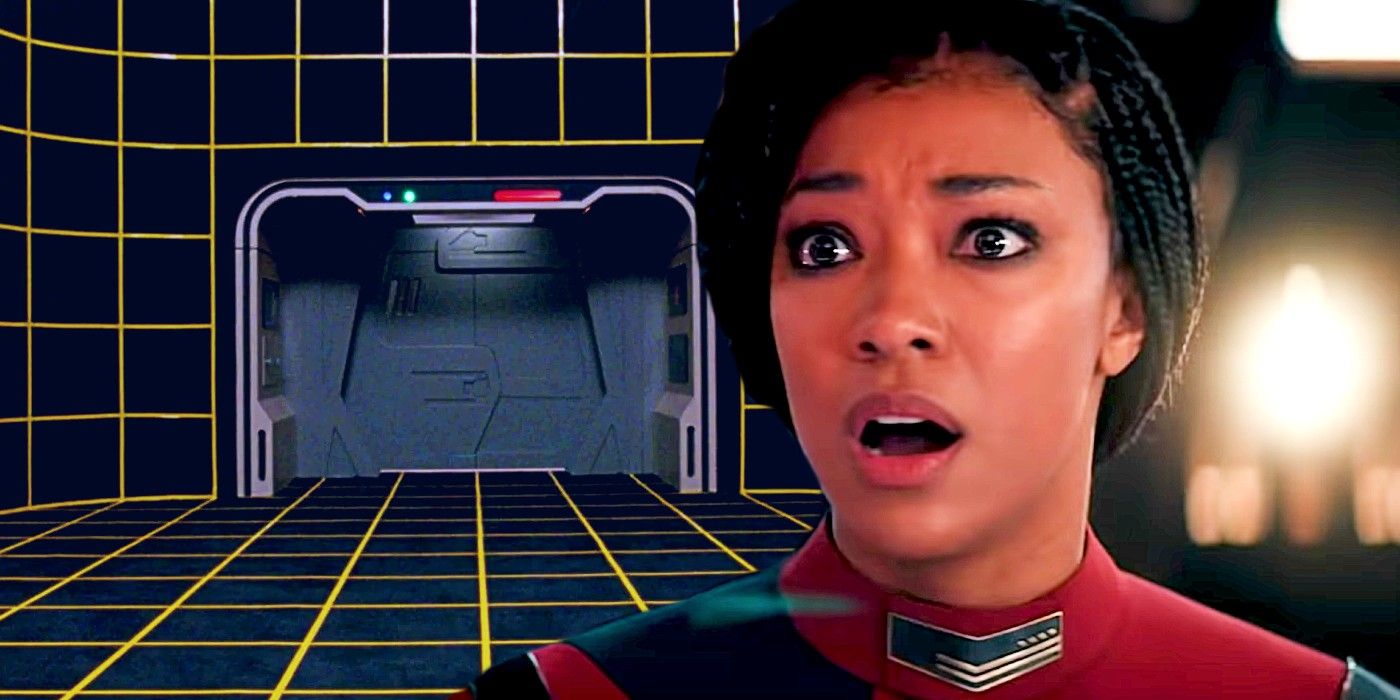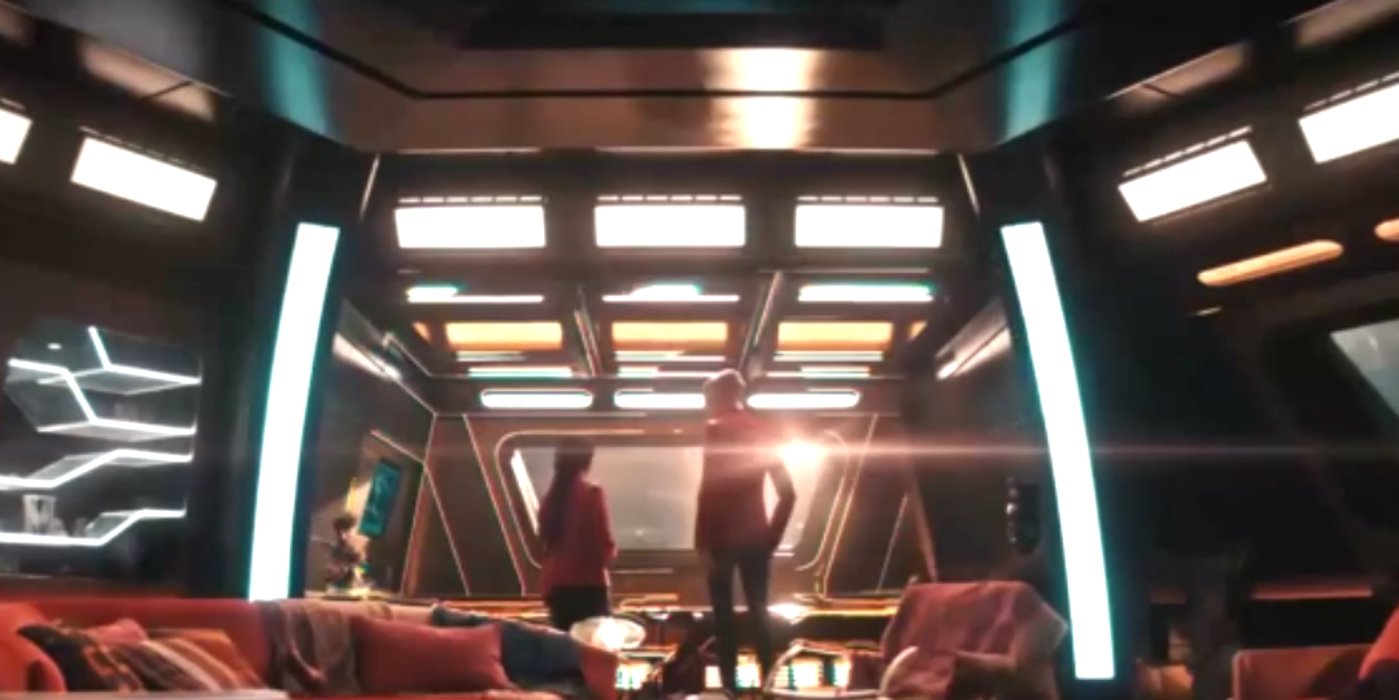
Warning: SPOILERS for Star Trek: Discovery Season 4, Episode 2 - "Anomaly".
Captain Michael Burnham (Sonequa Martin-Green) made a big holodeck change in Star Trek: Discovery season 4, episode 2 but now the physics of the holograms make even less sense than they used to. In Star Trek: Discovery season 4, Captain Burnham and her crew are facing their direst challenge: investigating a gravimetric anomaly that destroyed Book's (David Ajala) home planet of Kwejian. This crisis is already pushing the Discovery's personnel to their emotional limits, which is why the starship having holodecks as recreation is more important than ever.
The USS Discovery-A underwent a major refit to upgrade the thousand-year-old starship with 32nd-century technology like programmable matter. Hologram technology is also much more prevalent and in widespread use, and even Starfleet Officers' personal tricorders are now holographic. But in lieu of standard holodecks the ones used on Star Trek: The Next Generation's USS Enterprise-D, the 32nd-century holodeck technology in Star Trek: Discovery season 4 isn't limited to a single-use room aboard the starship. Now, Starfleet Officers can bring the holodeck to their own personal quarters and that's what Captain Michael Burnham did. But this creates a big logical problem.
In Star Trek: Discovery season 4, episode 2, "Anomaly," Captain Burnham took time to collect herself by visiting a holodeck program of Ni'Var. Burnham even told Saru (Doug Jones) that the Ni'Var hologram resembled the 23rd-century Vulcan Michael remembered as a child. Burnham then told Zora (Annabelle Wallis), Discovery's sentient computer, to disengage the hologram, which revealed Michael and Saru never left Captain Burnham's personal quarters. While this technology is admittedly cool, it also doesn't make sense because all of Michael's furniture was still in her quarters. Michael was standing still, but Saru was seen entering Michael's holodeck program through an archway yet the Kelpien walked towards Burnham in the holodeck virtual reality without an accident like tripping over her belongings.

It's possible Saru entered Burnham's quarters first, realized she was in a holodeck program, and then entered the hologram through a standard archway. Yet Michael didn't need the archway entrance to exit her Ni'Var holodeck since the illusion dissipated on her command. After all, the hologram is just an artificial environment but the physical items and actual environment of Michael's quarters aren't an illusion. So, if Burnham and Saru decided to walk around the Ni'Var landscape, how could they have done so without tripping over furniture and colliding into the bulkheads?
This is the reason why holodecks and holo suites in Star Trek are large empty rooms so that physical items and environments can be projected into them. Even then, Star Trek often pushed the boundaries of what should be logically possible in a holodeck. For instance, Star Trek: Deep Space Nine's popular season 9 episode, "Take Me Out To The Holosuite," saw Captain Benjamin Sisko (Avery Brooks) coach his crew in a baseball game, but the actual size of the holo suite couldn't possibly have encompassed the necessary size of a baseball field. Of course, Trekkers simply go along with it and use their imaginations, especially when they're enjoying holodeck episodes, which are usually some of Star Trek's most fun hours.
Star Trek: Discovery taking holodeck experiences out of the standard holodeck makes sense as the next step to how that technology is utilized in the 32nd century. However, holodecks were created in Star Trek as dedicated rooms for virtual recreation precisely because they were closed-off environments that can be manipulated at the user's will. Michael Burnham bringing the holodeck to her personal quarters made for a great Star Trek: Discovery scene but how it would actually work logically falls apart when the Discovery season 4 episode is dissected.
Star Trek: Discovery streams Thursdays on Paramount+.
from ScreenRant - Feed https://ift.tt/3HYDzpe


0 Comments